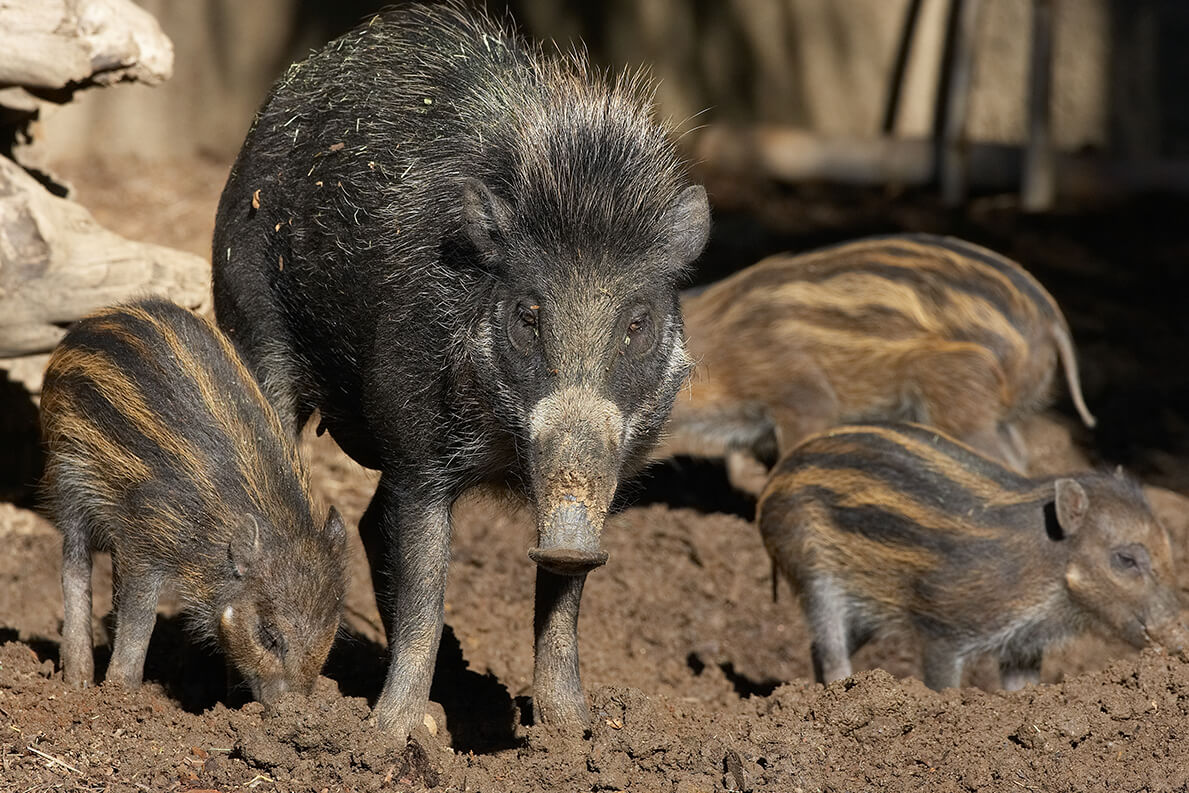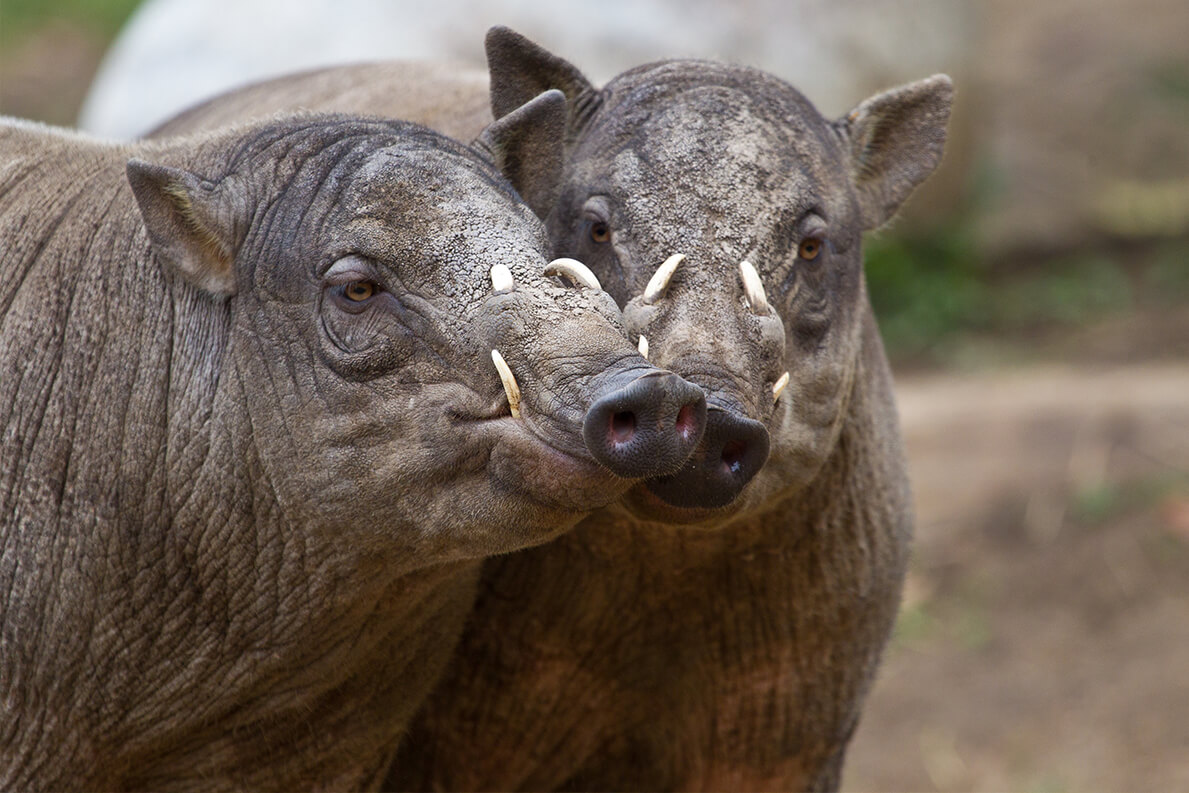Mighty fine swine: Beauty may be in the eye of the beholder, but there’s more to wild swine (also known as pigs, hogs, and boars) than meets the eye! From the petite pygmy hog to the immense Eurasian wild pig, swine are fascinating animals. Each species has its own distinctive look, behavior, and geographic region but shares many traits: strength, resourcefulness, and intelligence.
All swine (a plural noun meaning pigs) have that familiar piggy look: small eyes, expressive ears, and a squared-off snout for digging. But let’s skip to the end—the back end, that is. If a porcine individual’s tail is curly, then he or she is domesticated; wild pigs have straight tails. Domestic pigs often get much larger than their wild counterparts: a few have weighed more than 1,000 pounds (450 kilograms)! Males are always much larger than the females and have larger, more prominent tusks.
While humans hunt swine for food, natural predators include large cats, hyenas, and even pythons. The pigs’ primary defense is speed, but when cornered, they can behave quite fiercely. Their lower tusks, which can get to be about 3 inches (7 centimeters) long, are razor sharp and make excellent weapons! Red river hogs can even swim underwater to escape from leopards, catching a breath every 15 seconds or so.

Visayan warty pig—mysterious but charming: Native to the Philippines, not much is known about Visayan warty pigs in the wilderness, but wildlife care specialists describe the pigs at our Zoo as playful and friendly. The boars have three pairs of fleshy warts, or bumps, on their face. Biologists think these warts help protect the warty pig from the tusks of a rival during a fight. The boars also grow stiff, spiky “hairdos” as mating season approaches.

Red river hog—a pig of a different color: The red river hog is found in Africa. It is named for its reddish brown fur and the fact that it often wades through water. (Red river hogs don’t live in a red river!) These pigs are active during both day and night, and are good swimmers. It’s interesting to note that while many pigs are becoming scarce as a result of people moving into their habitat, these changes actually help red river hogs: as farming spreads, the farms provide good grazing for the hogs and lessen the leopard population.

Babirusa—the pig deer: Known as “pig deer” in Indonesia, babirusas come from islands rich in tropical forests. Because of the warm and humid climate, their coat is sparse, short, and light. Their face is covered in bristles, and they don’t sport the warts that some other pig species do. Instead of growing from the sides of the jaw, the babirusas’ tusks grow up through the top of the mouth, curving backward on the top of the nose. The males use these for fighting, locking an opponent’s tusks to stop attacks.
Chances are that when you heard the word pig in the past, you pictured the pink, domestic barnyard variety. Perhaps now you’ll think of the wonderful variety of swine in the world, ready to root in the dirt or battle an opponent. There’s just no such thing as a plain pig!











































